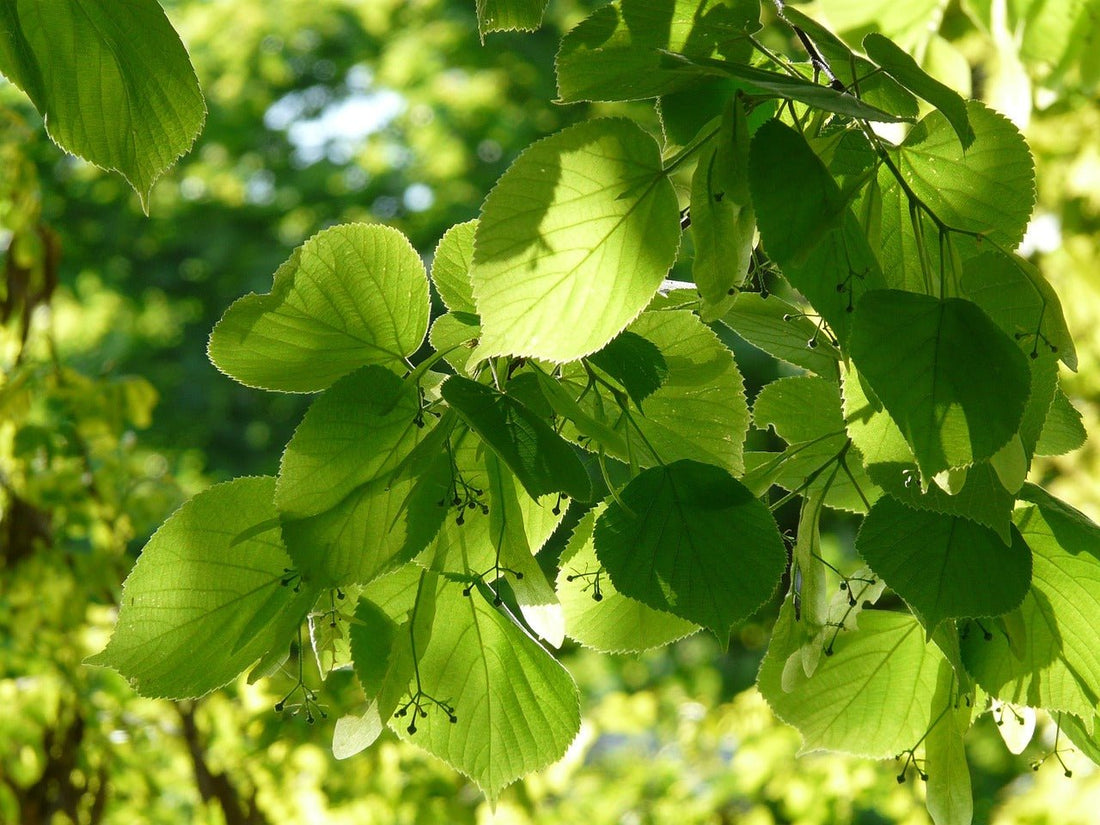
Linden: A Tree of Peace and Healing.
When you stand beneath a Linden tree, there is a softness that makes you feel as though the world has slowed down for a moment. Her heart shaped leaves flutter in the breeze and the creamy blossoms fill the air with a honeyed fragrance that draws the bees for miles around.
For centuries throughout Europe, Linden was planted in the centre of towns, to serve as a gathering place. Under its boughs, marriages were celebrated, disputes were settled, and communities came together in reconciliation. It has always been known as a tree of gentleness, unity, and peace.
Spiritually, Linden is a balm for the heart. Its medicine carries a cooling and compassionate energy that softens grief, soothes agitation, and lightens the heaviness of sadness. Sitting with Linden feels like being held in a kind embrace, a reminder that healing can happen not only through strength but through tenderness. For those who carry burdens of worry or sorrow, Linden offers a quiet invitation to rest and be comforted.
For as long as people have written about herbs, the flowers and bracts of Linden have been gathered in summer and dried for winter medicine. A warm infusion has traditionally been given to ease nervous tension, restlessness, and sleepless nights when the mind refuses to let go. Mothers offered it to their children when fevers ran high, trusting in Linden’s gentle ability to encourage perspiration and cool the body. It was used to bring comfort during colds and influenza, to ease sore throats, dry coughs, and that tightness in the chest that comes with winter illness. Some used it for mild asthma, finding that its softening qualities brought relief to constricted breath.
Linden has long been regarded as a friend to the heart. Traditional healers described it as easing palpitations brought on by stress or grief, and as a support in times of high blood pressure or arteriosclerosis. Although always gentle, she was respected for her ability to calm the circulation, to soothe headaches brought on by tension, and to quiet dizziness or ringing in the ears that sometimes accompanied vascular strain. In broader folk practice it was also turned to for rheumatism and gout, as a tea that could gently support the body’s elimination processes.
Modern science has begun to uncover why these old remedies were so widely trusted. The blossoms are rich in flavonoids such as quercetin and kaempferol, volatile oils like farnesol, and soothing mucilage compounds. These are thought to underlie Linden’s calming, antispasmodic, antioxidant and demulcent actions. Studies suggest it can help reduce muscle tension, quiet the nervous system, and coat irritated tissues of the throat and respiratory tract. Her gentle sedative effects mirror the way folk healers reached for it when restlessness or insomnia disturbed the night. Her antioxidants provide some explanation for why she has been linked to cardiovascular support and resilience.
Most often Linden is prepared as an infusion, its flavour sweet and honey like, making it an easy favourite for both children and adults. In European traditions it is also taken as a tincture, offering a concentrated form for those who prefer it.
Linden is considered exceptionally safe, even for the very young and the very old. Very large, prolonged doses have been historically noted as potentially overstimulating to the heart, but in the amounts used in teas and tinctures it is widely regarded as low risk. Those with serious heart disease or under professional care are advised to seek guidance before using it.
To sit beneath a Linden tree, or to sip from a cup of its blossoms and leaves, is to be reminded of peace. This is not a plant that forces change but one that quietly guides us back to balance. She teaches that gentleness is a form of strength, and that in softening the heart, healing often finds its way in.
